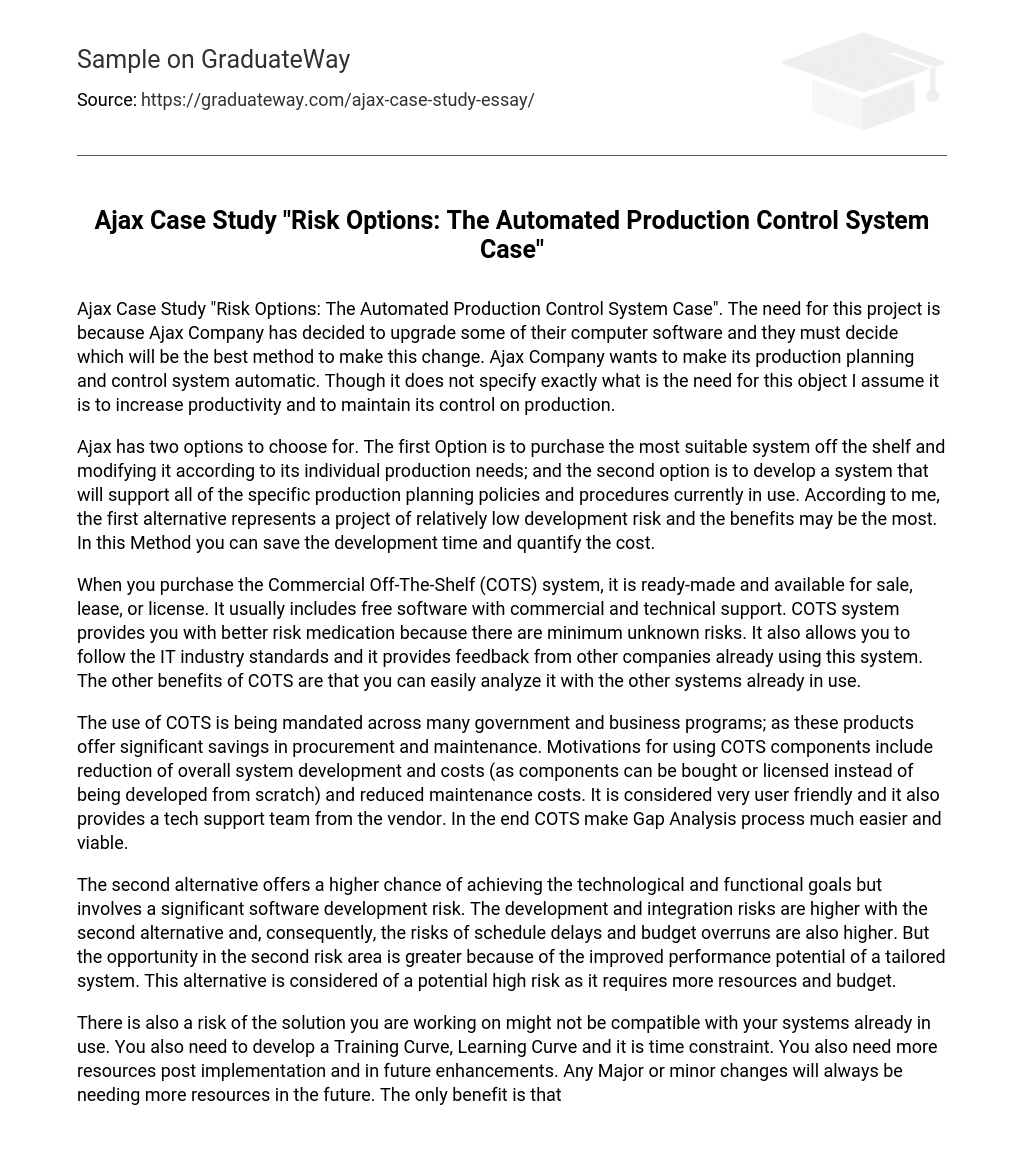The need for this project is because Ajax Company has decided to upgrade some of their computer software and they must decide which will be the best method to make this change. Ajax Company wants to make its production planning and control system automatic. Though it does not specify exactly what is the need for this object I assume it is to increase productivity and to maintain its control on production.
Ajax has two options to choose for. The first Option is to purchase the most suitable system off the shelf and modifying it according to its individual production needs; and the second option is to develop a system that will support all of the specific production planning policies and procedures currently in use. According to me, the first alternative represents a project of relatively low development risk and the benefits may be the most. In this Method you can save the development time and quantify the cost.
When you purchase the Commercial Off-The-Shelf (COTS) system, it is ready-made and available for sale, lease, or license. It usually includes free software with commercial and technical support. COTS system provides you with better risk medication because there are minimum unknown risks. It also allows you to follow the IT industry standards and it provides feedback from other companies already using this system. The other benefits of COTS are that you can easily analyze it with the other systems already in use.
The use of COTS is being mandated across many government and business programs; as these products offer significant savings in procurement and maintenance. Motivations for using COTS components include reduction of overall system development and costs (as components can be bought or licensed instead of being developed from scratch) and reduced maintenance costs. It is considered very user friendly and it also provides a tech support team from the vendor. In the end COTS make Gap Analysis process much easier and viable.
The second alternative offers a higher chance of achieving the technological and functional goals but involves a significant software development risk. The development and integration risks are higher with the second alternative and, consequently, the risks of schedule delays and budget overruns are also higher. But the opportunity in the second risk area is greater because of the improved performance potential of a tailored system. This alternative is considered of a potential high risk as it requires more resources and budget.
There is also a risk of the solution you are working on might not be compatible with your systems already in use. You also need to develop a Training Curve, Learning Curve and it is time constraint. You also need more resources post implementation and in future enhancements. Any Major or minor changes will always be needing more resources in the future. The only benefit is that you can customize the program as per your requirement, at a very high unknown risk.
One more drawback in today’s economy is also that the technology moves so fast that the development might be considered outdated even before its implementation. With this alternative you will always require more budgets and unknown risk is much higher. In the end, I propose to purchase COTS, as it is both time efficient and also helps you stay within your budget. It does have much unknown risks and implementation of the new software is much faster than building one.





